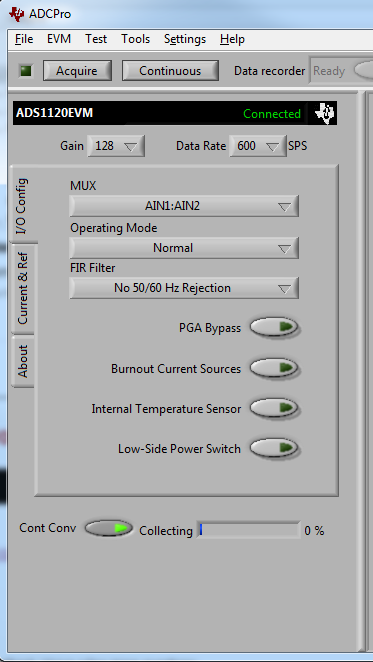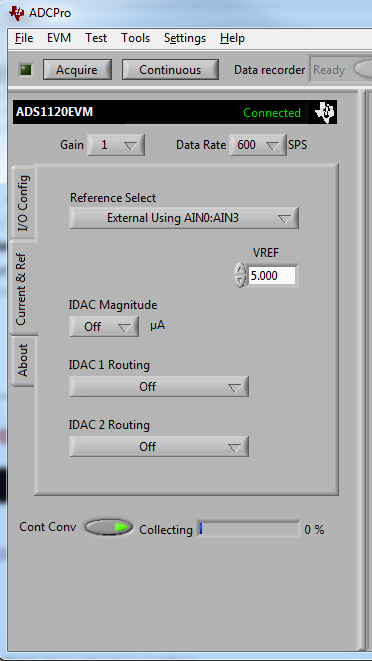I am trying to use the ADS1220EVM to measure a very small change (5mV/V FS) of an analog pressure sensor. I am trying to use this EVM to increase the resolution of the signal coming from the pressure sensor so we are able to detect the small voltage fluctuation better. Is there an application note or guide that goes over how to use the ADCpro in conjunction with the ADS1220EVM board to accomplish this function. Can we use the ADCPro to capture and plot the analog signal as well?
Thanks!
Adriana



